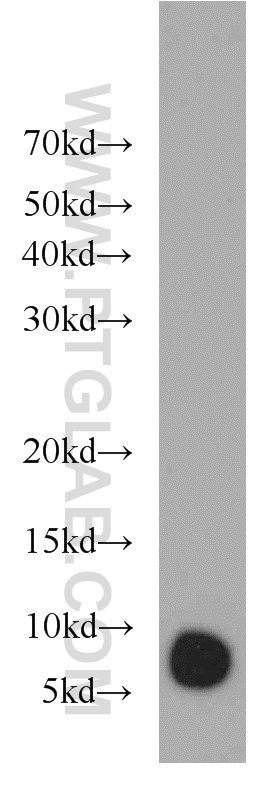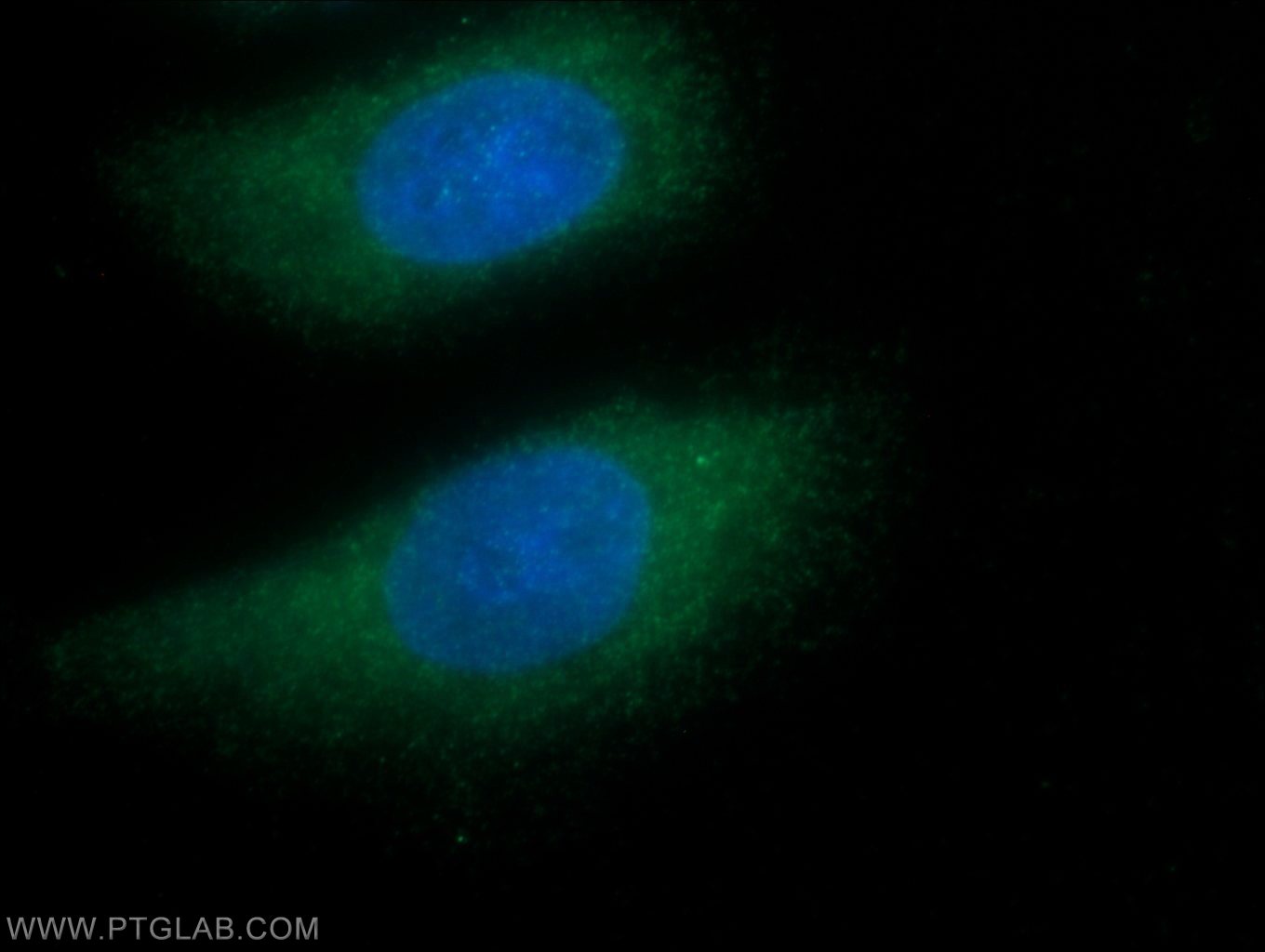验证数据展示
经过测试的应用
| Positive WB detected in | mouse eye tissue |
| Positive IF/ICC detected in | HeLa cells |
推荐稀释比
| 应用 | 推荐稀释比 |
|---|---|
| Western Blot (WB) | WB : 1:200-1:1000 |
| Immunofluorescence (IF)/ICC | IF/ICC : 1:10-1:100 |
| It is recommended that this reagent should be titrated in each testing system to obtain optimal results. | |
| Sample-dependent, Check data in validation data gallery. | |
产品信息
11884-1-AP targets GNGT1 in WB, IF/ICC, ELISA applications and shows reactivity with human, mouse samples.
| 经测试应用 | WB, IF/ICC, ELISA Application Description |
| 经测试反应性 | human, mouse |
| 免疫原 | GNGT1 fusion protein Ag2488 种属同源性预测 |
| 宿主/亚型 | Rabbit / IgG |
| 抗体类别 | Polyclonal |
| 产品类型 | Antibody |
| 全称 | guanine nucleotide binding protein (G protein), gamma transducing activity polypeptide 1 |
| 别名 | Transducin gamma chain, Guanine nucleotide-binding protein G(T) subunit gamma-T1, GNG1 |
| 计算分子量 | 74 aa, 8 kDa |
| 观测分子量 | 8 kDa |
| GenBank蛋白编号 | BC029367 |
| 基因名称 | GNGT1 |
| Gene ID (NCBI) | 2792 |
| RRID | AB_10858628 |
| 偶联类型 | Unconjugated |
| 形式 | Liquid |
| 纯化方式 | Antigen affinity purification |
| UNIPROT ID | P63211 |
| 储存缓冲液 | PBS with 0.02% sodium azide and 50% glycerol , pH 7.3 |
| 储存条件 | Store at -20°C. Stable for one year after shipment. Aliquoting is unnecessary for -20oC storage. |
背景介绍
G protein subunit gamma-T1(GNGT1) is encoded by the transducin gamma-subunit gene, which localized on huaman chromosome 7q21.3, participating in various transmembrane signaling systems. Particularly, GNGT1 gene is specific to retinal rod photoreceptors. Present polyclonal anti-GNGT1 antibody (11884-1-AP) is produced by immunizing rabbits with full-length chain of GNGT1 and dectects an 8 kDa band in mouse retinal tissue.
实验方案
| Product Specific Protocols | |
|---|---|
| WB protocol for GNGT1 antibody 11884-1-AP | Download protocol |
| IF protocol for GNGT1 antibody 11884-1-AP | Download protocol |
| Standard Protocols | |
|---|---|
| Click here to view our Standard Protocols |

